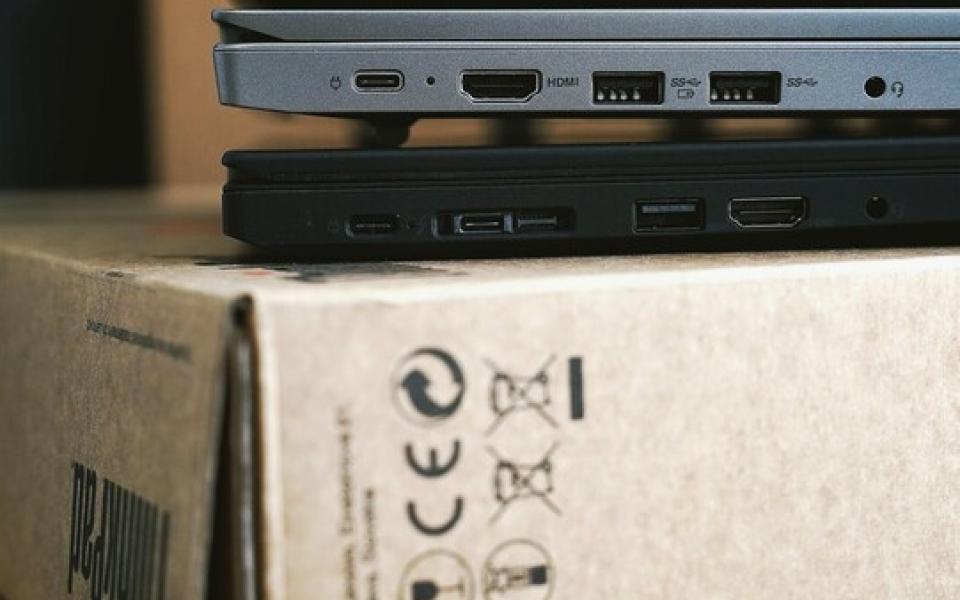The Lucky Break: Mobilising an insurance workforce and lessons learnt in 2020

It was the last week of February, 2020 and I had just come back to the office after a couple of weeks paternity leave following the birth of my daughter, Charlotte. My job title at the time was "Director of IT and Digital Services" at Camberford Underwriting, an insurance MGA based in Bromley. A significant part of my role was making sure that our staff could get their work done using the IT systems we provided.
I was coming down from the huge rush of becoming a dad and had barely got my feet under the desk when I received a meeting invite with the subject line "Coronavirus BCP". I would later come to appreciate the significance of this meeting as global events unfolded.
Sitting around the meeting room table: the Operations Director, Operations Manager and I discussed a new virus that was becoming a problem in East Asia, thousands of miles from home. This meeting was really just a "formality" - a sensible thing to do as part of the company's Business Continuity Planning, "just in case" this virus made its way over to our shores.
At the time, our team were 100% office based with desktop PCs, and in some cases, paper files were used to carry out underwriting and administrative work. We had two main IT systems, our front-end trading platform ‘CloudDesk' that I had developed and a legacy back-office system from SSP. We had about five old laptops which were mainly in the director's possession and probably used as doorstops, chopping boards and who knows what else! I knew that I needed to find more laptops for our whole team. I also had to change things around so that everyone could work remotely, should the need arise.
Within about an hour of the meeting ending, I had made an order for thirty new laptops, after searching around for the best value for mid-spec HP devices. A week went by and the new devices arrived at the office. By then there was already talk of the virus getting closer and it was gaining more attention by the UK media. I went back to order twenty more, ensuring all staff had access to one but only ten of the same model were left. I ordered what I could from the original supplier and bought similar ones from another supplier. We were all set… well, nearly.
Luckily, our main trading platform was already cloud-based, meaning that it worked within a web browser over an internet connection. As long as the member of staff had internet, they had CloudDesk. I wasn't so lucky with our back-office system. This was a legacy windows software application, designed to work from a central location. After a lot of back-and-forth communication with our vendor, I managed to set up a VPN route into the office which allowed our teams to gain access to the system via a secure RDP connection. It wasn't a perfect solution but given that the vendor had most of the control over our IT infrastructure, it was the best we were going to get.
The next job was making sure that fifty laptops were ready to use, with the appropriate software installed. With no real automation in place, I had to manually reconfigure the operating system, removing the pre-installed junk software and locking down admin features. I had to install virtual desktop software, PDF readers, video calling software, anti-virus and various other applications on each device. One at a time. This took a VERY LONG time.
All of the laptops were now ready to issue to our staff. I'd never ‘stress tested' fifty devices simultaneously connecting into our ageing network via VPN so it was decided that for one week only, we'd close the office and send our staff home to work so that we could monitor performance and ensure that our BCP was effective – "just in case". I couldn't have predicted that the staff wouldn't actually be coming back after that trial week. The office remained closed as the government had issued a work from home directive for all relevant businesses. What was intended to be a simulation ended up being a reality for over a year, but we were already prepared.
The following weeks saw laptops becoming like gold dust, prices soared, and stock disappeared quickly. Webcams that were once £15 were now £50. IT departments were stretched beyond measure, the corporate world had descended into chaos and the companies who hadn't put effective plans into place immediately suffered. We were one of the lucky ones who managed to weather the storm. Although it wasn't perfect, our plan worked.
If it wasn't for the pre-emptive measures taken by our BCP team before things got really bad, the situation would be very different. Effective businesses are proactive, not reactive. Having a solid Business Continuity Plan in place is key and IT and technology should play a big part in this. Ensuring that your IT providers are there for you when it really matters makes for bulletproof solutions to the "just in case" scenarios.
BrokerCentral by Nuworks is a fully secure, cloud-based software solution designed exclusively for insurance brokers. It allows any authorised member of staff with an internet-enabled device to work from anywhere, any time.